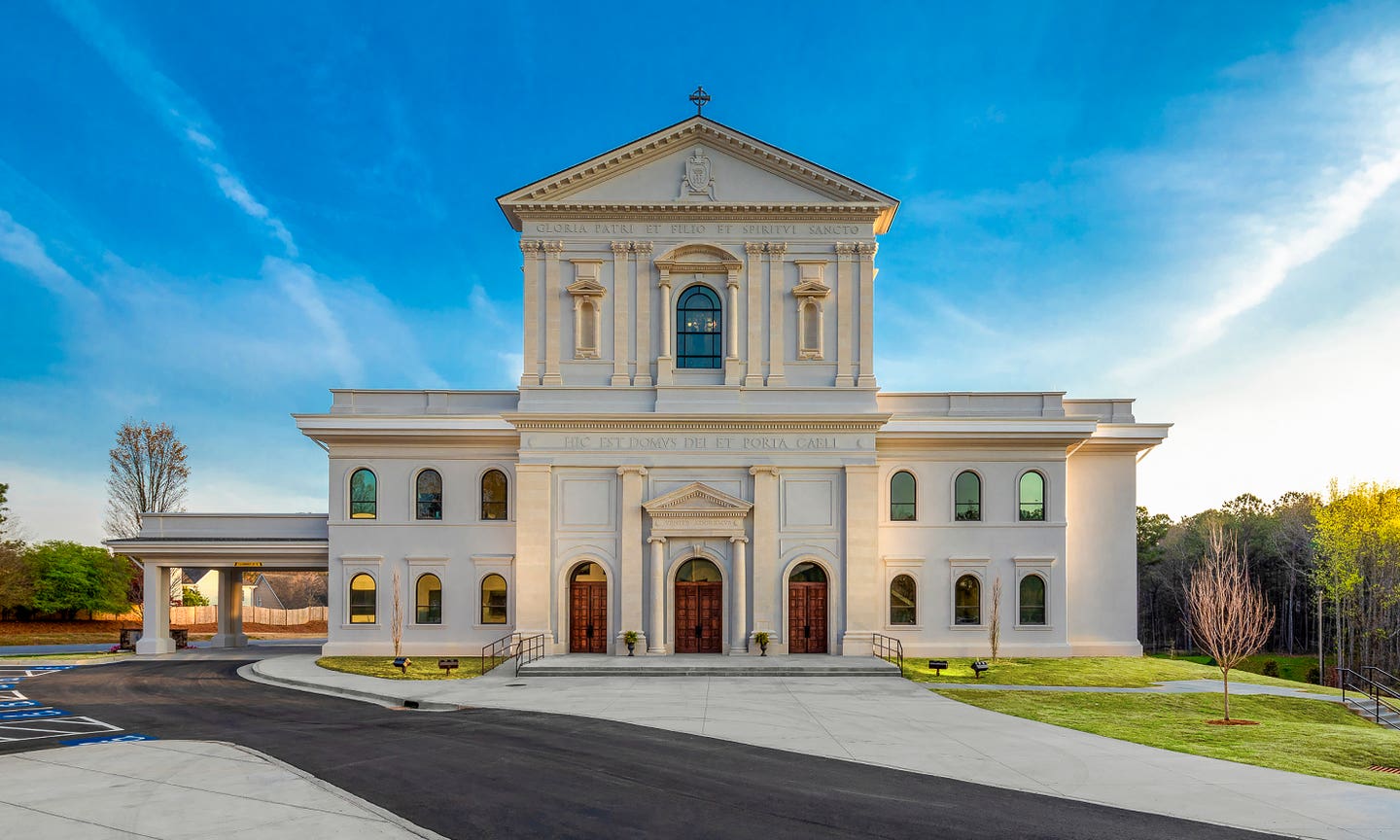
Religious Buildings
House of God
After several years of worshipping in a generic gymnasium, the burgeoning parish of Mary Our Queen Catholic Church in Peachtree Corners, Georgia, was ready to build a proper church.
When the parish father reached out to Harrison Design, principal architect John J. Albanese, AIA, was intrigued, and more than a little surprised. “Two of our other offices concentrate on ecclesiastical architecture, but ours, in Atlanta, specializes in building high-end residences,” he says. “When I explained this to the father, he said, ‘Well, we want you to build a house—a house of God.’”
Harrison Design came up with a design that fit the church’s needs and rather limited resources.
“They wanted an appealing exterior and an interior that was relatively simple,” Albanese says. “At that time, a lot of Catholics were migrating to the South and churches in the North were being decommissioned. The idea was to take some of the elements, such as stained-glass windows and statuary, from these decommissioned churches and use them in Mary Our Queen Catholic Church.”
As it happens, one of the churches the design team toured in search of architectural artifacts and decorative elements was St. Gerard’s Roman Catholic Church in Buffalo, a shuttered turn-of-the-20th-century limestone structure that had held its last mass in 2008.
St. Gerard’s, a smaller version of Rome’s Basilica of St. Paul Outside the Walls, was everything the Georgia parish was looking for. In addition to a 110-foot-tall bell tower that was added in 1930, it featured 47 stained glass windows, a dozen red-granite columns, a coffered ceiling, 15 murals, 26 rondos, and a fresco.
The building was so desirable that “we started having discussions about taking the church apart limestone block by limestone block and transporting it the 900 miles to Atlanta and resurrecting it there,” Albanese says. “In the end, though, it wasn’t meant to be. The cost turned out to be too high.”
Danny Gonzales, founder and president of Atlanta-based DMG Architectural Specialists and then a member of the parish who was added as a consultant on the project, says that as part of that effort, he hired a company to produce a laser scan of the interior and exterior of St. Gerard’s so as-built architectural drawings could be created.
“Had we been able to move the church, it would have made history,” he says, “because this has only been done a handful of times in this country.”
As it so happened, shortly after the scan, the original plans were, in fact, discovered. “There was a story about a priest waking up in the middle of the night and remembering where they were,” he says.
Once it was determined that the move was unfeasible financially, Harrison Design returned to the drawing board with a mandate to design a Neo-Classical-style church that had the look and feel of St. Gerard’s and that would accommodate some of its distinct elements, including its stained-glass windows and mammoth marble altarpiece. “We tried to capture the feel of the Buffalo church while still making Mary Our Queen distinct,” Albanese says.
Because of budget constraints, Mary Our Queen had to make significant compromises. Stucco with cast-stone accents, including the large pilasters and entry entablature, was used instead of limestone, and the roof is shingled, not copper.
Like St. Gerard’s, though, the parish will have to wait to add a bell tower. “We incorporated it into the plans,” Albanese says.
Those who worshipped at St. Gerard’s would feel right at home at Mary Our Queen Catholic Church because the pews, the statuary, the baptismal font, the confessionals, the stained-glass windows, and even the marble altar are, indeed, from the Buffalo church.
“We repaired and cleaned all the windows, and the only thing we did differently was their arrangement,” Albanese says. “In St. Gerard’s, the larger windows were on the top and the smaller ones were on the bottom. We reversed that order.”
When St. Gerard originals were not available, Gonzales and his team recreated some and fashioned others in similar styles. The six sets of mahogany double doors—three sets leading from the exterior to the narthex and three sets leading to the sanctuary—were replicated. So was the design of the ceiling over the altar, which, like St. Gerard’s, is barrel vaulted but made of lightweight foam coated in plaster.
Although they are not replicas of the ones at St. Gerard’s, the church’s interior columns and arches, complete with Roman/Ionic capitals, are in the same Classical style. Gonzales’ DMG team also faux-finished the pulpit to match the marble of the altarpiece from St. Gerard’s.
The decoration of the interior is intentionally spare—although the flooring around the altar is two colors of marble, the main floor is a stained concrete, and the walls and ceilings are colored not with murals but only mere paint—allowing the parish to add flourishes when funding is flush.
The project, which Gonzales calls “a labor of love,” took a decade to accomplish.
“The completion of the Mary Our Queen was a monumental event for the parish, who eagerly anticipated it,” Albanese says. “And we were happy to be a part of it.”








